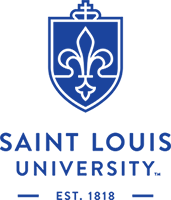Newswise — It's a fact that hasn't always been recognized by disaster planners: when it comes to preparing for bioterrorism, nurses will be on the front line, and with a major, direct role in providing patient care and making other critical "first responder" decisions.
A new training tool from the Institute of Biosecurity at Saint Louis University School of Public Health, an interactive CD Rom available to nurses across the United States for the first time this month, aims to help nurses prepare for this important responsibility.
"Nurses must fully embrace their responsibility in bioterrorism preparedness," said Terri Rebmann, one of the authors of the training program and a faculty member at SLU's biosecurity institute. "But many nurses have not received bioterrorism education, do not engage in exercises and drills meant to evaluate their level of preparedness, nor do they report feeling adequately prepared to respond if an attack occurs. Nursing must investigate and address the profession-specific barriers to bioterrorism preparedness to ensure the best response to bioterrorism."
The CD-Rom training program, Bioterrorism Preparedness for Nurses, consists of three components:
· A lecture on bioterrorism preparedness that is specific to the profession of nursing and the role nurses will play in recognizing and responding to such an attack.
· Interactive training modules that teach bioterrorism response through the use of a smallpox scenario.
· A reference and resource section where nurses may obtain additional training and reference materials on bioterrorism preparedness, including a dozen web links to bioterrorism websites, eight fact sheets on potential bioterrorism agents, a reference table containing isolation guidelines, and other training and reference materials.
Rebmann said the smallpox scenario used on the CD Rom is an innovative training tool that walks participants through the step-by-step process of responding to a known or suspected case of smallpox.
"This scenario is specific to nurses' response," she said, "so clinical diagnosis, confirmatory laboratory testing, and prescription of medication are not addressed because these are not nursing functions. The scenario is presented in a question and answer format, in which the participant must answer the item correctly before advancing to the next question."
A pre and post-test exam are provided as a means of measuring learners' knowledge before and after the program. These exams are required for participants wishing to receive either a certificate of completion or continuing education units (CEU) for the program.
The content for Bioterrorism Preparedness for Nurses program was developed by staff at the SLU's Institute for Biosecurity, and edited by national content experts from nursing, public health, infection control and infectious diseases. The program is available for purchase from Saint Louis University Institute of Biosecurity website (http://bioterrorism.slu.edu/bt/products.htm).
Although the program is getting its national distribution this month, members of the Missouri Nurses Association have already been accessing and using the program.
Because nurses are the largest group of healthcare providers in the United States, developers thought it was critical that nurses have specific and targeted training.
When the threat of bioterrorism first re-emerged in the 1990s, education was targeted at the traditional first responders: police, fire and emergency medical service personnel. But as emergency planners described a more realistic picture of how a bioterrorism attack would unfold, physicians and public health professional became more involved. But nurses were still often excluded, as physicians received the highest priority for bioterrorism preparedness education.
Despite this, Rebmann said nursing has slowly embraced the need for bioterrorism preparedness.
"Now is the time for change," Rebmann said. "Using only the medical model approach marginalizes the unique contribution of nursing and may lead to the neglect of critical components of bioterrorism management. Most nurses will not diagnosis or prescribe treatment to victims of bioterrorism; these are medical functions. Nursing must address nursing-specific needs, such as holistic care for victims and their families.
"Although the possibility of a large-scale bioterrorism attack is low, the potential consequences if we are not prepared are staggering," Rebmann said.
Saint Louis University School of Public Health is one of only 36 fully accredited schools of public health in the United States and the nation's only School of Public Health sponsored by a Jesuit university. It offers masters degrees (MPH, MHA) and doctoral programs (Ph.D.) in six public health disciplines and joint degrees with the Schools of Allied Health, Business, Law, Medicine, Nursing and Social Service. It is home to seven nationally recognized research centers and laboratories with funding sources that include the National Institutes of Health, the Centers for Disease Control and Prevention, the Health Resources and Services Administration, the American Cancer Society, the Robert Wood Johnson Foundation and the World Health Organization.
